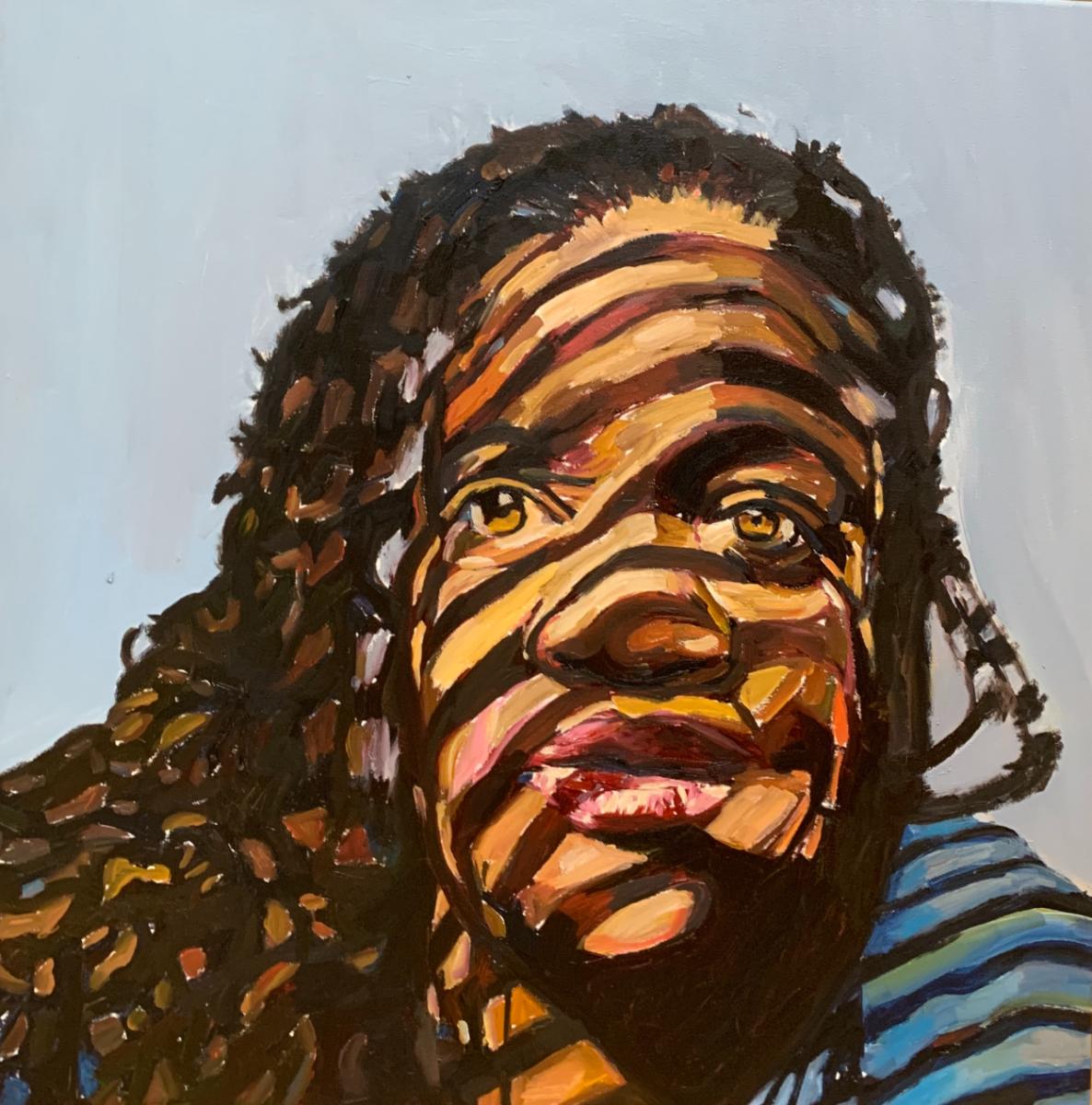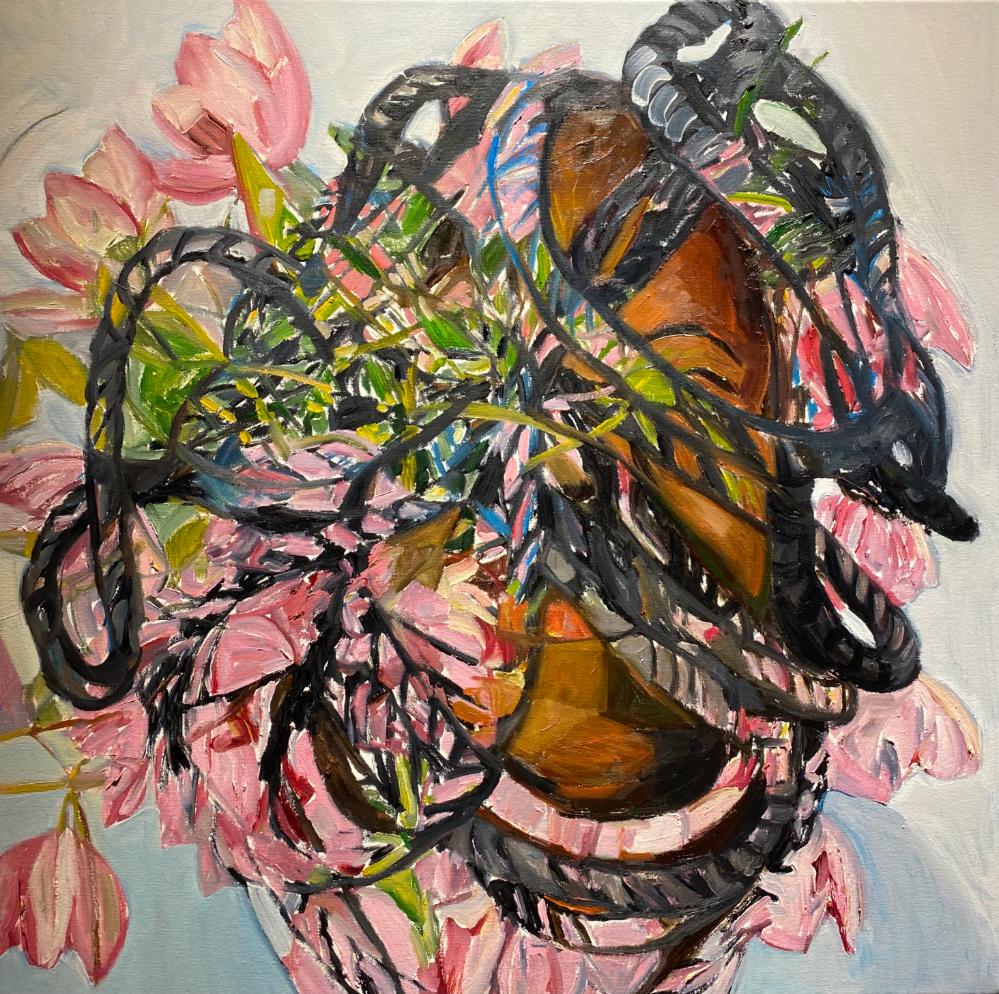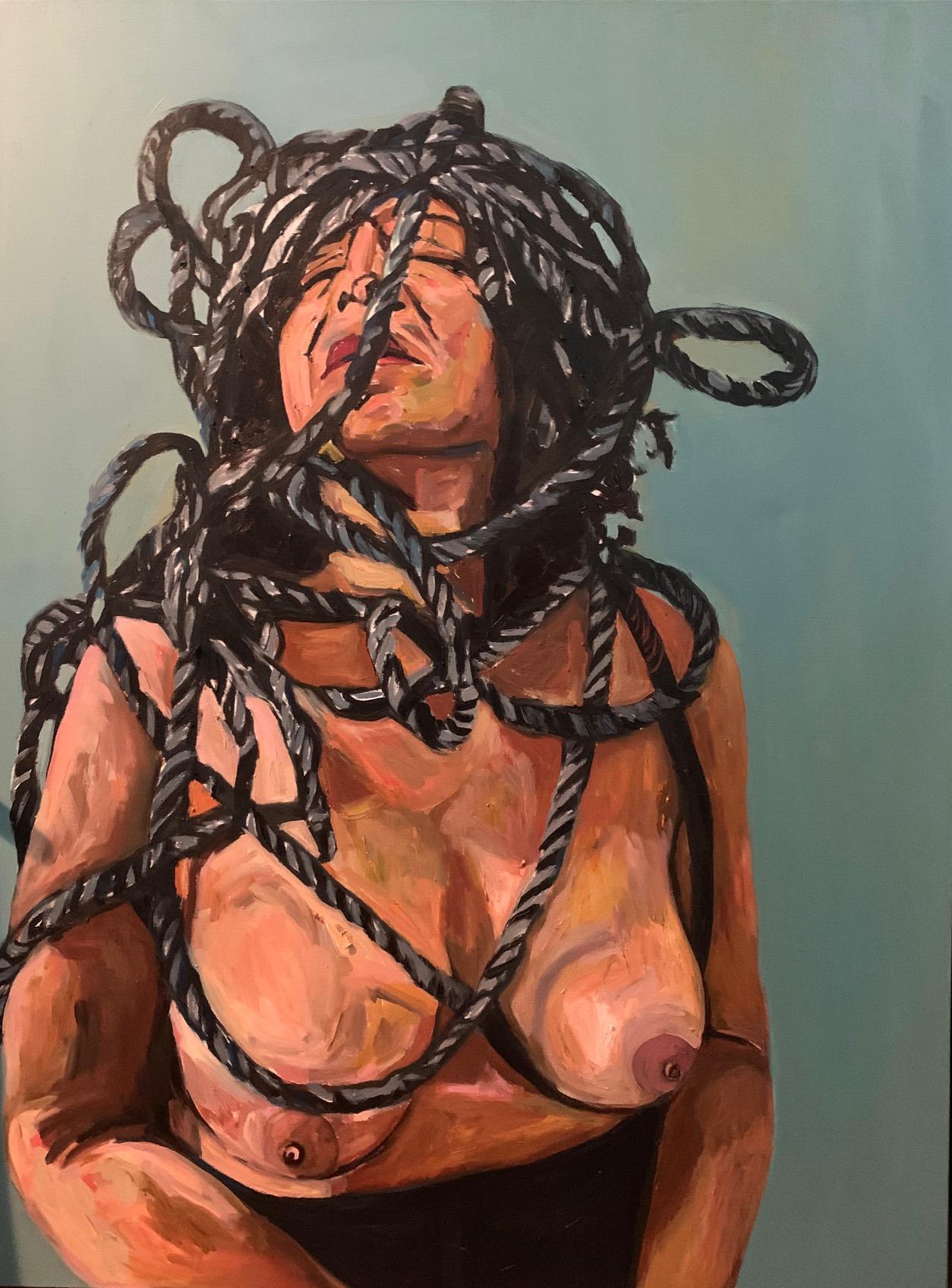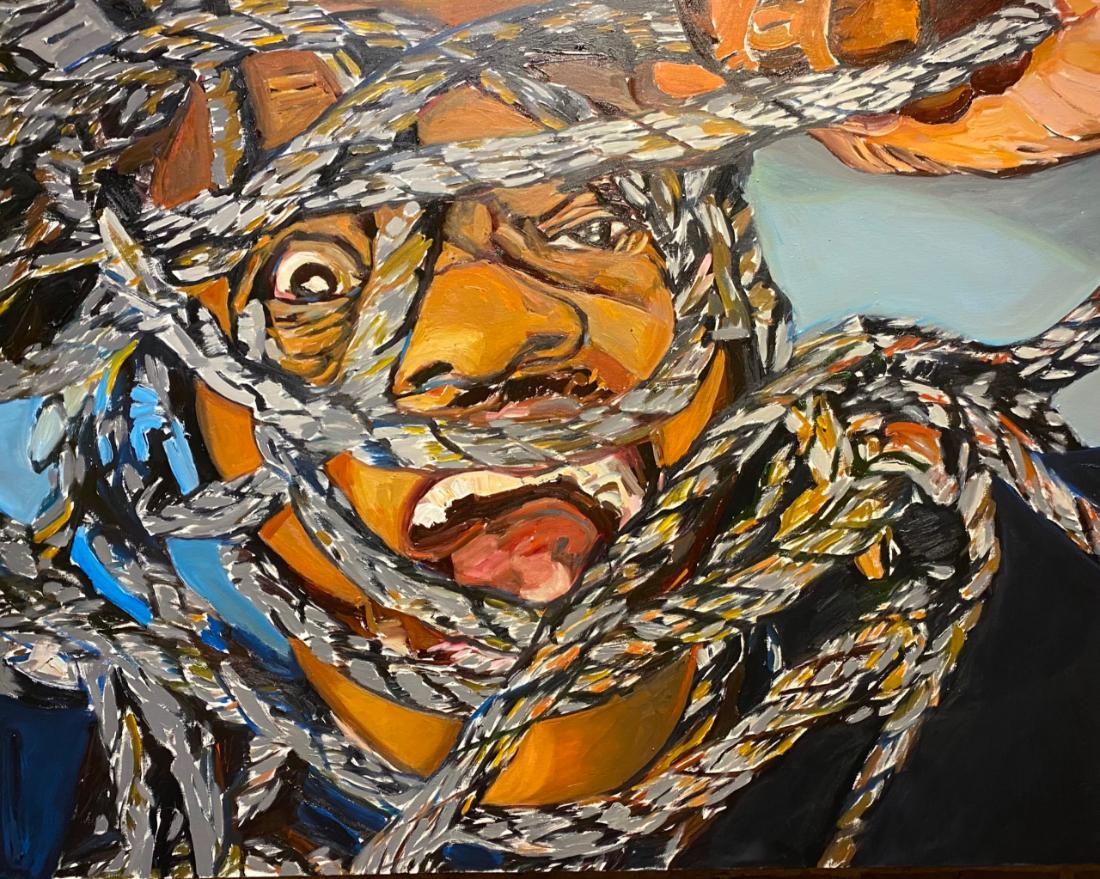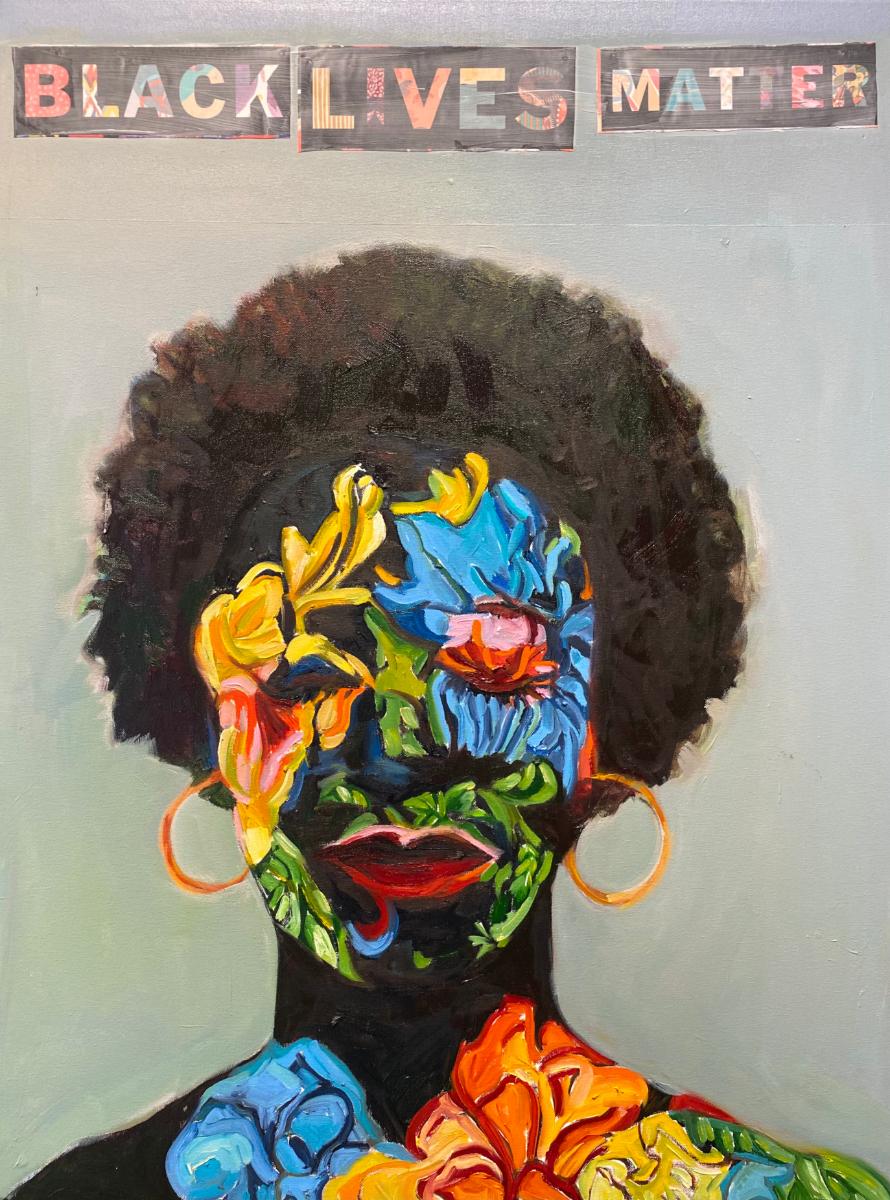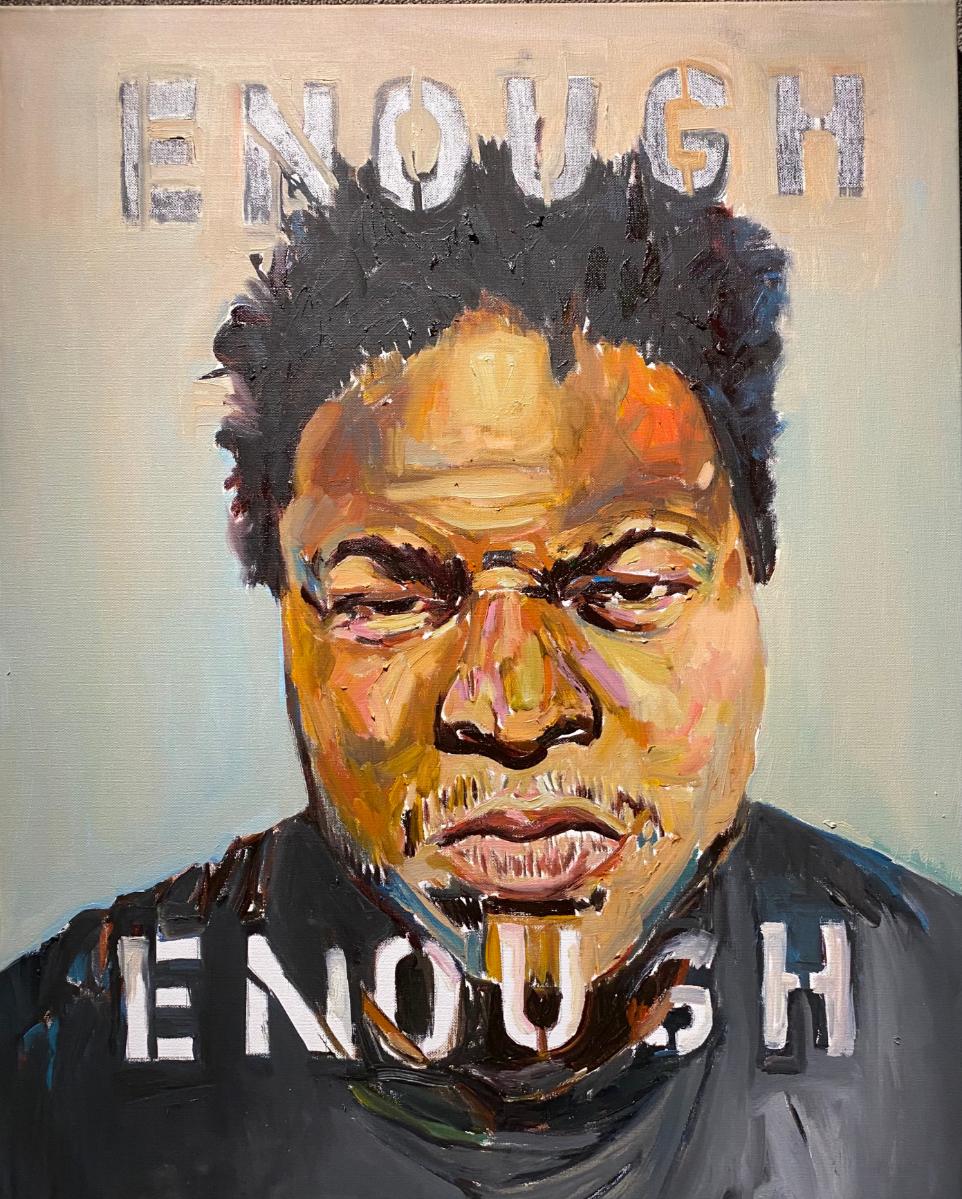Amy Funderburk: You describe creating these paintings as: “My voice felt loud and unapologetic. I felt power in speaking my truth…. This is the time to be brave.” How has this period shaped your work?
Beverly McIver: I needed to really turn this time into a positive. I was like, I'm just gonna paint whatever comes up. So I started with the scarf paintings. …I decided to just wrap [the scarf] around my head. And then, at four o'clock in the afternoon…the light shines through the blinds, [creating] this pattern…. I couldn't see what I was taking photographs of because the scarf is opaque. [I] just started painting those images, not really thinking too much or overanalyzing….




